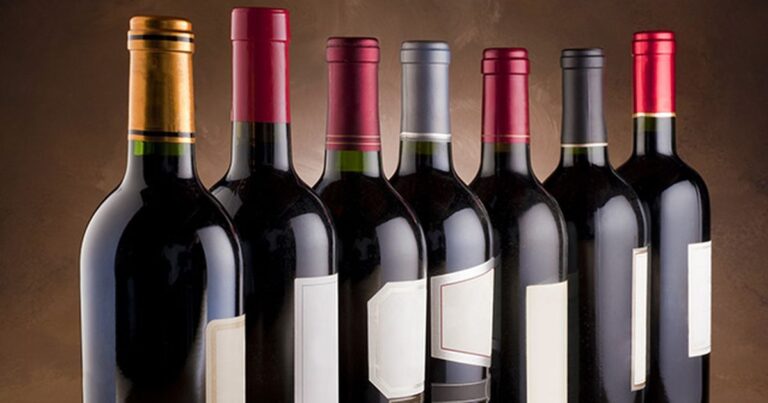The Surprising Truth About How Many Bottles Are in a Wine Case – You Won’t Believe It!

The-Surprising-Truth-About-How-Many-Bottles-Are -in-a-Wine-Case
Table of Contents
ToggleWhen it comes to purchasing wine, whether you’re a connoisseur or just someone looking to stock up for a gathering, one common question often arises: How many bottles are in a wine case? The answer may seem simple at first, but the truth is more surprising and fascinating than you might think.
In this article, we’ll uncover the unexpected details behind the number of bottles in a wine case, explore the factors that influence this number, and why knowing the answer can make a difference in your wine-buying experience. Prepare to be amazed by some of the little-known facts that will change the way you think about wine cases forever.
The Standard Wine Case: 12 Bottles
For most people, the answer to the question is straightforward: a standard wine case contains 12 bottles. This is the most common configuration you’ll find when buying wine in bulk, whether it’s red, white, or sparkling. This 12-bottle case is the default packaging used by wineries, distributors, and retailers, and it’s based on both tradition and practicality.
Why 12 Bottles?
So why exactly 12? It goes beyond mere convenience. The number 12 is deeply ingrained in wine culture, having been the standard for centuries. Historically, cases of wine were shipped in wooden crates with room for a dozen bottles. This quantity is also a manageable weight for transport and storage. Over time, this system stuck, and it’s what most consumers expect when purchasing a full case of wine.
However, don’t be fooled into thinking 12 bottles is the only option available!
The Surprising Twist: Variations in Case Sizes
While 12 is the most common number, there are several variations of wine case sizes that you might encounter, especially in specialty stores, online markets, or when dealing directly with wineries. Let’s dive into a few of the more surprising variations:
1. 6-Bottle Cases – A Smaller, More Affordable Option
For those who prefer not to commit to a full case or want to sample different wines, 6-bottle cases are becoming increasingly popular. Whether you’re buying a mixed selection or looking for a smaller quantity for a dinner party, these cases offer flexibility and are typically easier to store. They are especially common in boutique wineries or for limited-edition collections.
2. 3-Bottle Cases – The Perfect Gift or Tasting Set
In some cases, especially when purchasing high-end wines or rare vintages, you may find cases that contain just 3 bottles. These smaller cases are often marketed as tasting sets or luxury gifts, providing a curated selection of wines at a premium price. For collectors and enthusiasts, a 3-bottle case could also be a way to ensure they are getting the best of the best, without investing in a full case.
3. 24-Bottle Cases – For the True Enthusiast
On the flip side, there are 24-bottle cases, often preferred by serious collectors or those looking to make bulk purchases. This larger case size is ideal for stocking up on your favorite wines, and it may come at a discounted price per bottle. It’s also a common choice for restaurants, bars, or wineries that want to buy in larger quantities to save on shipping costs.
4. Specialty and Magnums: Larger Bottles, Fewer in a Case
When it comes to larger bottles like magnums (1.5L) or even double magnums (3L), you’ll find that the number of bottles in a case significantly decreases. For example, a case of magnums typically contains 6 bottles, and a case of double magnums will usually only contain 3 bottles. These oversized bottles are a popular choice for special occasions, as they provide a dramatic presentation and are often saved for years to come.
Why Does the Case Size Matter?
You may be wondering: Does it really matter how many bottles are in a case? Absolutely! The number of bottles in a case can affect everything from pricing and shipping to storage space and overall wine experience.
Cost-Effective Bulk Purchases
When you purchase a full case of 12 bottles, you’re often getting a better deal per bottle. Wineries and retailers offer discounts for bulk buying, which can make purchasing a case a more economical choice, especially if you’re stocking up on your favorite wine for the long term.
Storage Considerations
If you have limited space at home, knowing how many bottles are in a case can help you plan accordingly. For instance, a 12-bottle case takes up more room than a 6-bottle one, which could make a difference in how you store it, particularly if you’re keeping the wine in a wine cellar or cooler.
Gift and Special Occasion Planning
If you’re buying wine as a gift or for a celebration, you’ll want to ensure that the number of bottles suits the occasion. A case of 3 bottles may be perfect for a thoughtful gift, while a 12-bottle case may be too much for smaller gatherings. Understanding the variety of options available can help you choose wisely.
The Bottom Line: Knowledge Is Power
While a standard wine case typically holds 12 bottles, the truth is that there’s a surprising array of case sizes and options out there. Whether you’re purchasing a small gift, stocking up for a special event, or making a bulk purchase for your collection, knowing the number of bottles in a case and how that affects the price, storage, and your overall wine experience can make all the difference.
So the next time you’re perusing the wine section, remember: the number of bottles in a case isn’t always a simple 12. Explore the surprising variations and make sure you’re choosing the case that fits your needs – you might just find an option that surprises you!
Ready to buy? Next time you’re in the store, don’t just grab any case—take a moment to discover how many bottles are in it and consider all the possibilities it offers. You might just be amazed at what you find!
For more detailed information, please visit our blogs.






